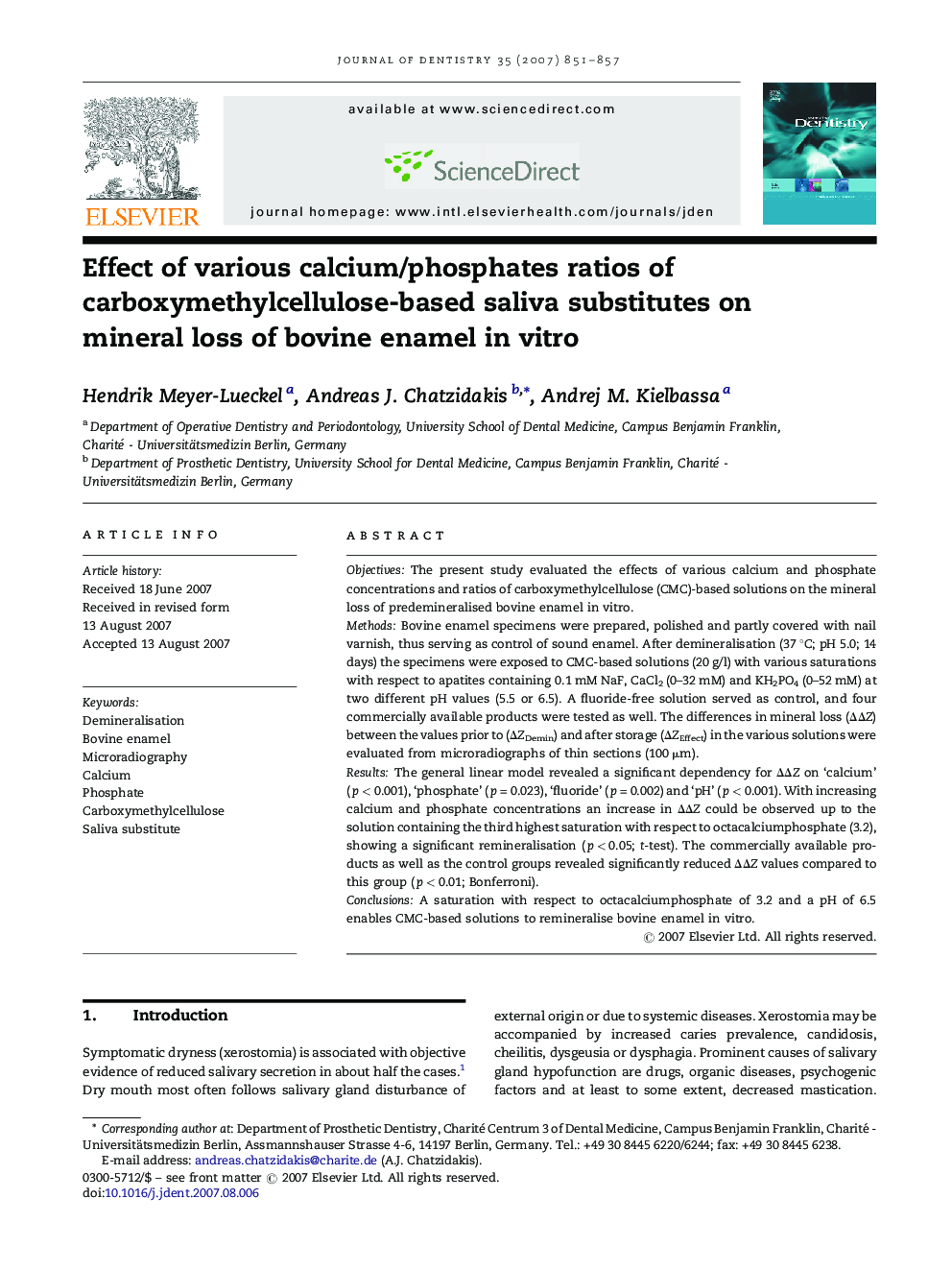| Article ID | Journal | Published Year | Pages | File Type |
|---|---|---|---|---|
| 3146090 | Journal of Dentistry | 2007 | 7 Pages |
ObjectivesThe present study evaluated the effects of various calcium and phosphate concentrations and ratios of carboxymethylcellulose (CMC)-based solutions on the mineral loss of predemineralised bovine enamel in vitro.MethodsBovine enamel specimens were prepared, polished and partly covered with nail varnish, thus serving as control of sound enamel. After demineralisation (37 °C; pH 5.0; 14 days) the specimens were exposed to CMC-based solutions (20 g/l) with various saturations with respect to apatites containing 0.1 mM NaF, CaCl2 (0–32 mM) and KH2PO4 (0–52 mM) at two different pH values (5.5 or 6.5). A fluoride-free solution served as control, and four commercially available products were tested as well. The differences in mineral loss (ΔΔZ) between the values prior to (ΔZDemin) and after storage (ΔZEffect) in the various solutions were evaluated from microradiographs of thin sections (100 μm).ResultsThe general linear model revealed a significant dependency for ΔΔZ on ‘calcium’ (p < 0.001), ‘phosphate’ (p = 0.023), ‘fluoride’ (p = 0.002) and ‘pH’ (p < 0.001). With increasing calcium and phosphate concentrations an increase in ΔΔZ could be observed up to the solution containing the third highest saturation with respect to octacalciumphosphate (3.2), showing a significant remineralisation (p < 0.05; t-test). The commercially available products as well as the control groups revealed significantly reduced ΔΔZ values compared to this group (p < 0.01; Bonferroni).ConclusionsA saturation with respect to octacalciumphosphate of 3.2 and a pH of 6.5 enables CMC-based solutions to remineralise bovine enamel in vitro.
